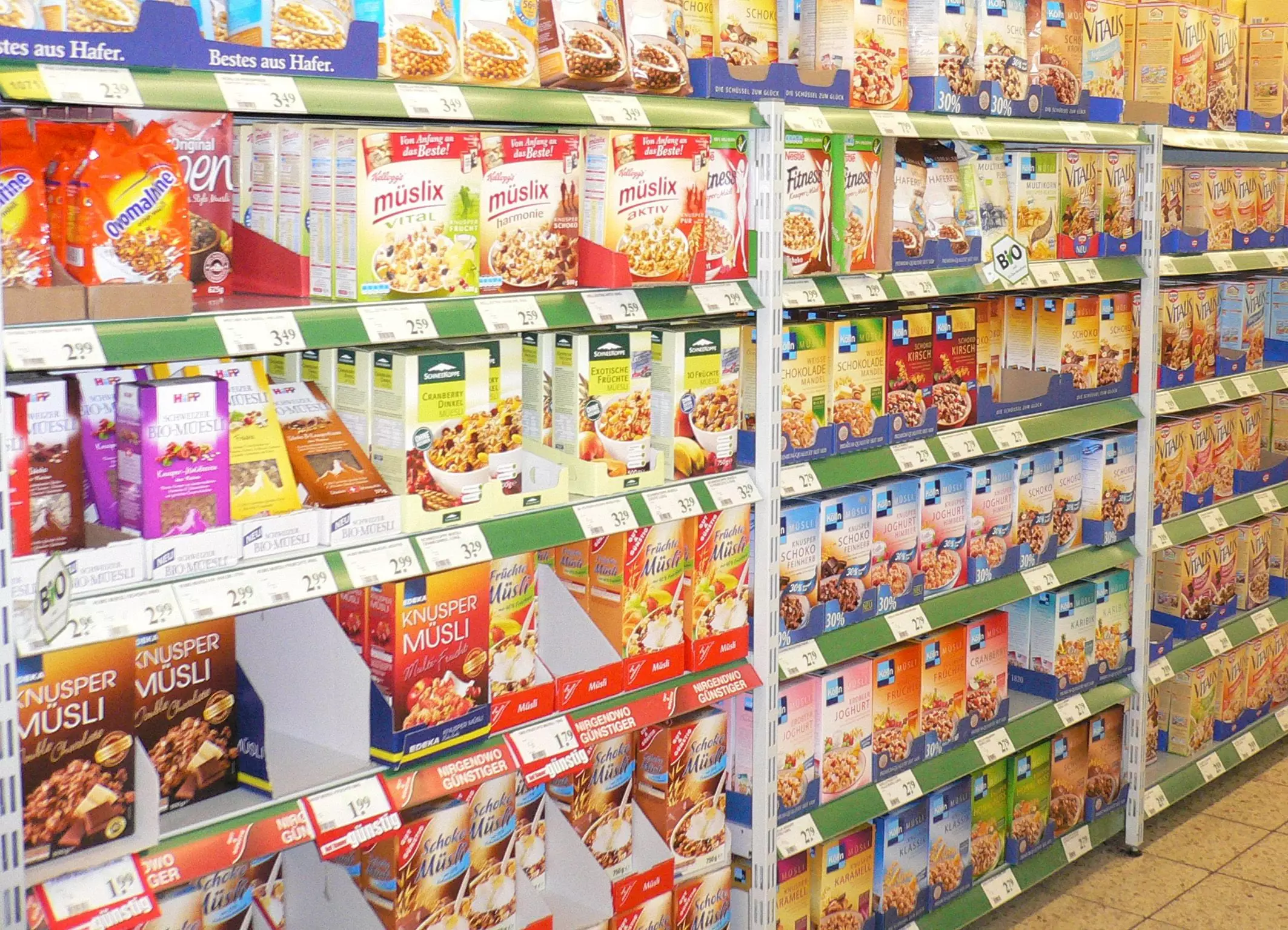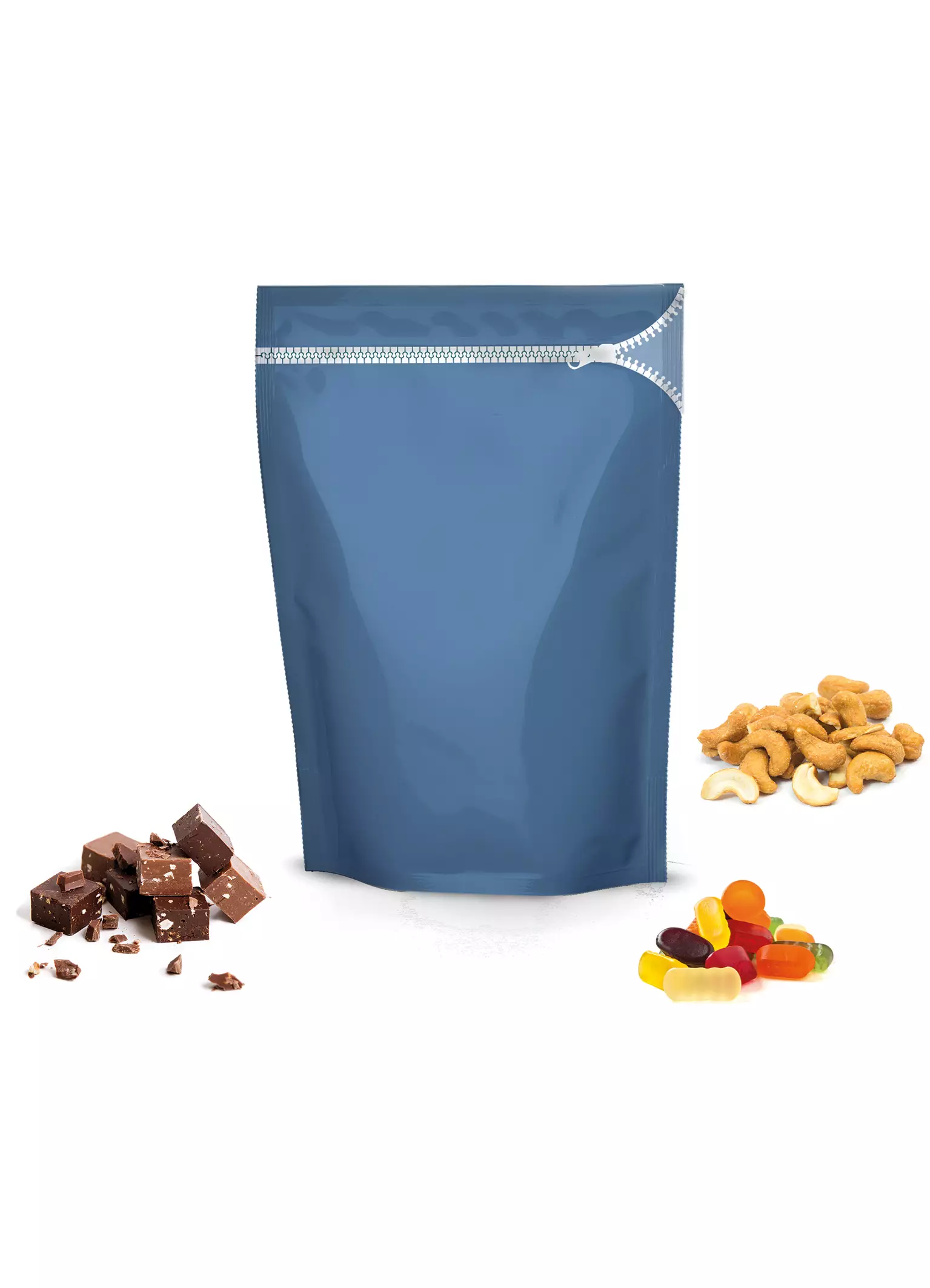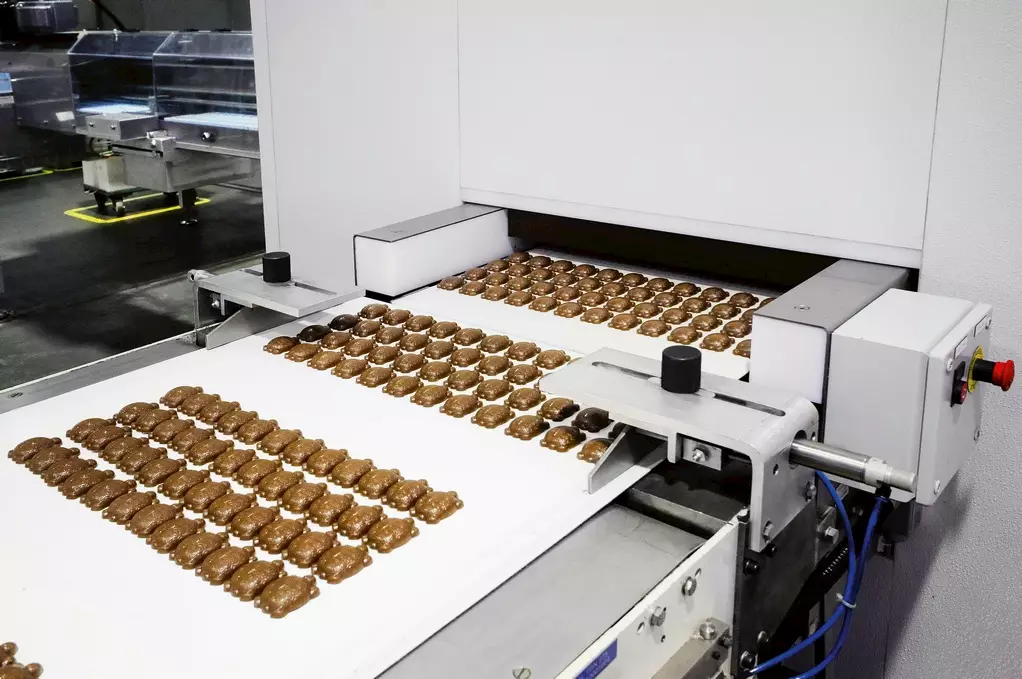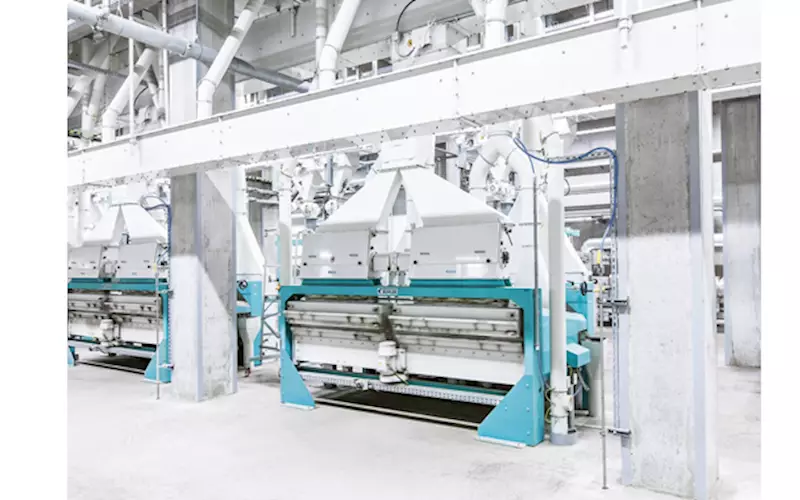Confectionery and bakery product packages: standing out from the crowd – but not at any price
As the consumption of confectionery and bakery products continues to rise, so do the expectations of consumers. Not only do they want to be wowed by the taste, but they are also becoming choosier as far as the packaging is concerned. The latter has to catch the eye and provide additional functions while also responding to long-term environmental requirements. And this is forcing manufacturers of confectionary and baked goods to be more creative and efficient. The good news is that packaging prod
25 Jan 2017 | By PrintWeek India
The confectionery industry goes to enormous lengths to sway consumers with its products. Packaging chocolate and similar delights in appetising wrappers and allowing the product to speak for itself are no longer enough these days. To entice the consumer, manufacturers today are digging deeper into their box of tricks. The latest trends include fun videos and commercials for their products that consumers can watch in the process of consumption. One of the pioneers of “snackertainment”, in which the real and the digital worlds merge, is food giant Nestlé. In a marketing campaign with Internet leader Google, it has the red rectangular wrappers of “have-a-break” KitKat printed with QR codes that lead straight to the manufacturer’s own “YouTube my Break” channel. This is where users are entertained in a variety of ways – and thus cleverly hooked by the product.
What makes the campaign different is that the striking KitKat logo with its strong brand identity has been removed from its central position on the wrapper for this special edition and replaced by YouTube. In addition, Google’s Android operating system, in the wake of Cupcake, Donut, Froyo, Gingerbread, Honeycomb, Ice Cream Sandwich and Jelly Bean, was given a brand name in the shape of KitKat for the first time in history. It is an open secret in the industry that Nestlé dug deep into its pocket for the privilege. This way the group is underlining something that experts and studies have recently repeatedly found: that the package is of supreme importance today in communicating the brand – particularly in the confectionery sector. “With increasing product diversity, competition is getting tougher. If you want success on the confectionery market, you have to present your product well,” says Torben Erbrath of Germany’s Association of the Confectionery Industry (BDSI).

Spoilt for choice: Choosing from such a vast array of products is not easy. Brands and conspicuously packaged goods go down best with consumers
This applies all the more as the selection of sweets and bakery products at the point of sale is constantly growing. The existing products with traditions going back many years are being supplemented more and more by sugar-free or sugar- and fat-reduced confectionery. The range of confectionery suitable for vegetarian or vegan diets is also on the increase. In addition, confectionery that is gluten- or lactose-free or even halal or kosher can now be found in almost any supermarket. In the snack sector, says BDSI, the palette is growing in diversity and with a huge variety of flavours – whether in nuts, deep-fried or baked salty snacks. “Thanks to this vast diversity, there’s a matching product for every consumer,” says Erbrath. “The package paves the way into the shopping trolley.” Package designers are therefore faced with a difficult task. They have to publicise the snack with memorable slogans across all possible media and showcase it on the shelves with attention-grabbing colours and shapes.
However, when jostling for position, it is best not to overdo it. Because making excessive use of materials and hence resources does not go down well with the consumer. “Customers are attaching growing importance to keeping their ecological footprint as small as possible. And they also have a strong desire for healthy, ultra-fresh foods that also come in high-convenience and attractive packages,” says Andreas Steinle of the Zukunftsinstitut (Future Institute), a think tank for trend and future research. But industry should do without overly flamboyant and elaborately produced packages for economic reasons as well as ecological ones. The cost not only of raw materials such as milk, cocoa and sugar, but also of energy and packaging materials is steadily rising.
To lastingly attract consumers who want sustainably produced goods and prevent the cost of materials and production from spiralling out of control, industry has no alternative but to economise on materials and above all avoid excessively extravagant packages while also reducing energy input in production. The fact that material downsizing is possible is illustrated by studies by pacproject, an international firm of consultants. As an example, it has taken a close look at the historic Corny muesli bar wrappers and discovered that the product’s aluminium barrier film wrapper has been steadily reduced in the last 30 years and finally replaced by a new composite barrier material – without detriment to the product. “Even without full barrier protection, the Corny bar was still in a very good qualitative condition at the end of its sell-by date. And this raised the question whether the cereal bar actually needs the level of protection and barrier effect provided by current films,” says pacproject packaging engineer Alexander Witt.
Alternatives to classical packaging materials like aluminium and plastics are already making increasing inroads into the marketplace. Under its Greenbox label, Bionatic, for example, has developed its first range of some 250 different packaging solutions using renewable or recycled resources such as wood, cellulose, bioplastics and palm leaf. Many of these solutions are biodegradable or can be incinerated pollution-free, says Bionatic founder Robert Czichos. And their production is straightforward: “A single leaf is converted into package by first cleaning it with a high-pressure water jet. And then it is moulded on exposure to heat in a mechanical press. So it’s a kind of deep-drawing process. This is followed by finishing in which the edges are smoothed and the surfaces polished. And that is pretty well it.”
Meanwhile scientists are searching for further alternative materials. In the context of its ThermoWhey project, the Fraunhofer Institute for Process Engineering and Packaging (IVV) is working on a production process for barrier coatings made of whey protein capable of replacing conventional oil-based polymer coatings. The advantage of whey is that its ingredients are naturally capable of extending the shelf life of foods. However, whey is heat-sensitive, so researchers first have to find a coating formulation that can also be processed at high temperatures.
At interpack 2017 in Düsseldorf from 4 to 10 May, many more packaging innovations for confectionery and bakery products will also be on show. 2,700 exhibitors are expected, and some 1,000 of these have named the confectionery industry as a target group for their products and services – and what they will be exhibiting will be suitably wide-ranging. Machine manufacturers will also be present in Düsseldorf with numerous innovations. “Manufacturers of food-processing and packaging machines accord high priority to handling natural resources responsibly and managing their processes with minimal environmental impact. They know how important sustainable production processes are for customers,” says Vera Fritsche, expert at the association for food processing machines and packaging machines within VDMA (Mechanical Engineering Industry Association).

In confectionery production, Fritsche continues, there is still plenty of room for optimisation. Intelligent control and automation technologies and energy-efficient drives, compressors, fans and pumps are some of the classical solutions for saving electricity and other resources and boosting energy-efficiency. Efficient motors perfectly adapted to machine movements and acceleration processes reduce power consumption. In addition, says Fritsche, innovative and optimised processes cut the consumption of energy and water, while innovative machine designs extend service and maintenance intervals and service life and thus save energy.
Swiss plant manufacturer Bühler, one of the prime movers in efficient processing solutions, has set itself the goal of reducing energy consumption in all of its core processes by at least a further 20 per cent by 2020. “This way we can both raise the energy-efficiency of our products and also do our bit for environmental protection at the same time,” says Ian Roberts, the Group’s Chief Technology Officer. He sees a central aspect here in productivity – by shortening cycle times, for example. Additionally, Bühler is redoubling its efforts to improve the energy efficiency of existing customer installations. Because of the numerous process steps such as cleaning, roasting, debacterising, crushing and grinding the cocoa beans, chocolate manufacture is highly complex and costly.
Bühler pledges to slash energy costs in cocoa processing by 65 per cent if customers make use of the company’s free energy audit and also adopt its shell burning technology. The audit is used for tracking down energy leaks in the production process. As an alternative to the direct disposal of the shells, the new combustion system exploits the energy obtained from the shells for roasting and debacterising, so no heating energy has to be bought in.
Theegarten-Pactec is also pushing vigorously ahead with machine solutions that help customers cut their costs. The company is focusing among other things on “Industry 4.0”, i.e. the digitalisation of production and streamlined human-machine and machine-machine communication with the aid of the latest software. “Making production processes transparent, keeping key data retrievable at all times, analysing them correctly and ultimately deciding on the appropriate course of action holds great potential for boosting efficiency,” says Markus Rustler, Theegarten’s Managing Partner. For this purpose, the company started back in 2011 to overhaul its user interface and the associated data processing for the machine operator and management. “We have thus created a platform that makes the performance of our systems more transparent. For example, it is possible to establish correlations between efficiency losses and time, ambient temperature or other parameters. And this helps operators to track down errors and to find their own solutions,” says Rustler.

Furthermore, the intuitive support of maintenance and cleaning processes has been optimised – with active service and maintenance interval reminders from the machine itself, for example. The advantage of automation and digitalisation is that the machinery linked into complex communication systems can be operated by fewer operators, in some cases even only one. And by integrating the user interface into mobile consumer devices, the data from the machinery can be accessed and even edited from anywhere in the world, says Rustler.
The Swiss company Knobel Maschinenbau, a specialist in machines for chocolate manufacture, helps producers to cut costs in other ways. It sells its equipment – moulding lines, stand-alone depositors and other devices – on the modular principle so that customers can extend their production step by step and, if required, re-equip their production locally segment-wise. This offers them high flexibility and thus permits rapid and efficient changeover to new products. Swift re-equipping has also been made possible by simply integrating new machines in the system on the plug-and-play principle, Knobel explains.
With numerous efficiency-boosting innovations, machine manufacturers have attuned themselves to the requirements of manufacturers of confectionery and bakery products. This gives the latter plenty of scope not only in their choice of packaging materials, but also in the modernisation of their lines. And at interpack, they can find out all about these innovations.











 See All
See All